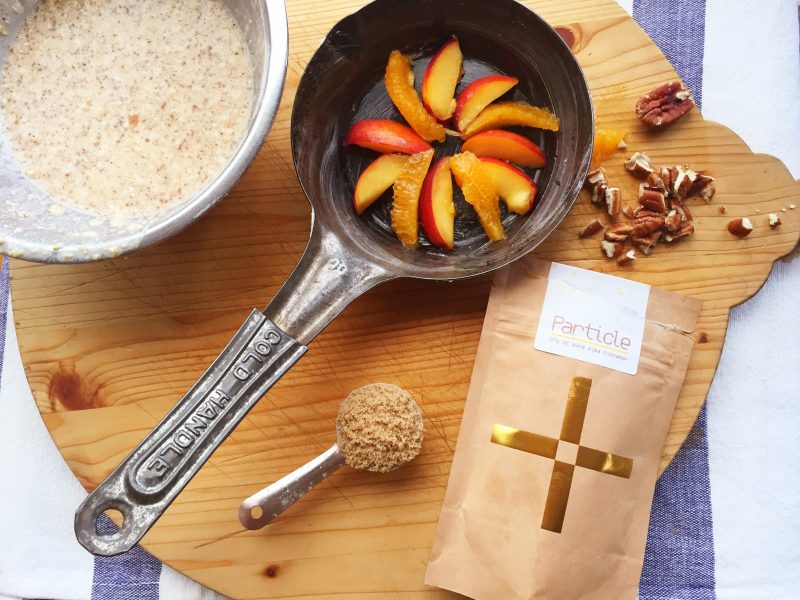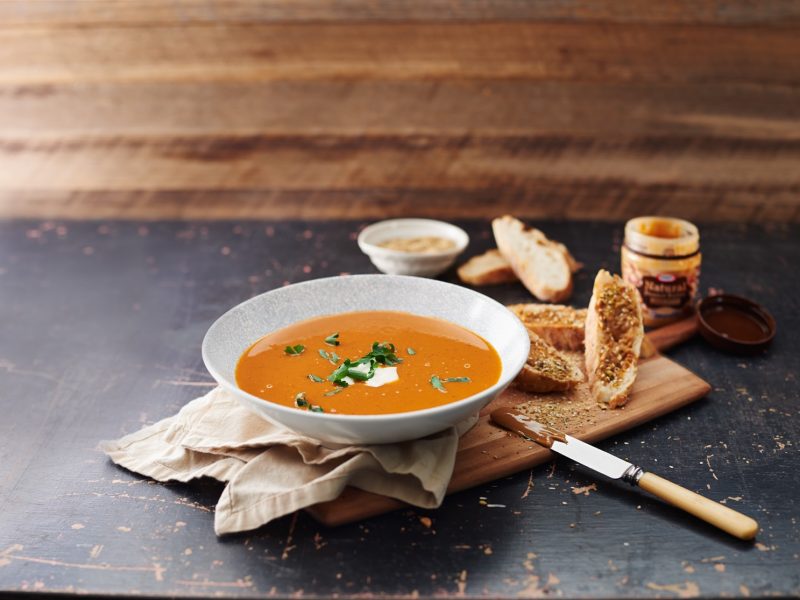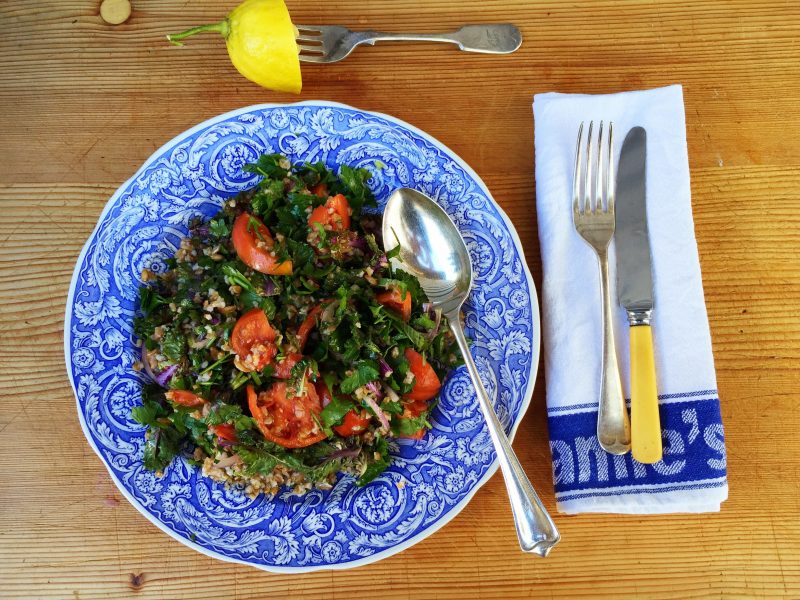With an estimated 280 Australians developing diabetes every day, it is our fastest growing chronic disease. So chances are when you sit down to Christmas lunch you are going to be dining with a friend or family member who has diabetes. If you’re a home master cook or chef at a high end restaurant, you need some tips to help serve up a meal to please everyone in the festive spirit. We asked our Sub of the Month and Diabetes expert Di Munns for advice.
Di Munns APD has over 25 years of experience working as a dietitian in both the public and private sectors. She runs her own business, Northern Beaches Diabetes & Weight Management and has done so for the past 13 yrs as a sole practitioner but also as part of a team in 3 different practices. Di is passionate about culinary nutrition and helping chefs get things right for her clients. Make sure you jump across and like her Facebook page Northern Beaches Diabetes & Weight Mgt and follow her on twitter @DiMunns.
Have you ever felt so passionate about something that you won’t stop till you see “it” all happening? Well that’s how I feel about people with Diabetes being able to eat out at restaurants knowing the food on the menus is “Diabetes Friendly”. People with diabetes LOVE EATING OUT and visiting friends, just like the rest of us! So we need to make it easy for them. Whether you are entertaining at home or working as a Chef at a restaurant, we all need to be mindful of what makes a menu Diabetes Friendly.
Menu design
 People with diabetes need to follow a healthy diet just like you and me. So that’s easy. You want to serve up loads of fresh vegetables and salads, control the saturated fat, salt, sugar and kilojoules. Remember that your guests appreciate stunning seafood or expensive raspberries and cherries and find these just as indulgent as high fat and sugar treats.
People with diabetes need to follow a healthy diet just like you and me. So that’s easy. You want to serve up loads of fresh vegetables and salads, control the saturated fat, salt, sugar and kilojoules. Remember that your guests appreciate stunning seafood or expensive raspberries and cherries and find these just as indulgent as high fat and sugar treats.
However people with diabetes also need to keep a careful, strict and regular check on their blood glucose levels. A short term spike in blood glucose levels can leave them feeling completely wrung out and in the long term increase diabetes complications. The key is to help them navigate the menu and make the right choices so they don’t end up with these huge spikes.
Most of the time this means serving up controlled carbohydrate portions and going for choices with a lower glycemic index (Low GI = less than 55). Eventually I’d like to see carbohydrate counts listed for each menu option to assist our clients with Type 1 Diabetes as well as clients with Type 2 Diabetes who take insulin. We just need to get creative with our menus!
Source: ritzybee.typepad.com via Emma on Pinterest
Here are my ten top tips:
Portion proteins – no one needs massive serves of protein – somewhere around the 200g mark is what we would aim for when eating out.
Switch your spuds – everybody love potatoes but there are some which are actually low GI and your guest will be so appreciative that this is an option on your menu. In Australia offer Carisma (GI=53) or Nicola (GI=58) potatoes (both white) or orange sweet potato (GI=61). The other white potatoes tend to be very high GI (70-100).
Make it nice rice – a cold rice salad is fantastic on a buffet just make sure you use a low GI choice like Low GI Brown Rice or Basmati rice (GI=58), not Jasmine (GI=89) which can cause spikes in blood glucose levels.
Roll with it – offer sourdough or multi-grain dinner rolls, not large white or wholemeal rolls as they are high in carbs and high GI.
Don’t pass on pasta – contrary to popular belief all pasta is actually low GI if cooked Al Dente! However it’s the large serves with the creamy sauces that gives pasta a bad name. Offer an entree size pasta serve with a tomato based sauce (not floating in oil).
Be merry – offer plenty of non-alcoholic options for people who don’t want more than a celebratory champers to toast, but do want choice. If we could get more than diet cola on the menu we would have some happy customers. What about mixers like diet Iced Tea or Waterford’s Diet Blood Orange Sparkling Mineral Water with fresh mint and a lime wedge? And you must whip up the Scoop Summer Saver mocktail with Cranberry Light. Now that would make life more exciting for your special guest.
Veg out – my clients are encouraged to eat a good half plate of non-starchy veges or salad with each meal – even breakfast! What you say? Easy with steamed asparagus and mushrooms, grilled tomato as a side to your poached eggs on sourdough toast. So at Christmas time, think about ways to slip in extra veg that flavour pair with your traditional dishes or relaxed BBQ. The Scoop Nutrition Festive Fattoush salad is a great place to start as legumes like chickpeas are low GI too.
Shake the salt habit – Chef’s are the experts at getting the best flavours from food with pungent herbs and aromatics like citrus zest and garlic. And plenty of herbs and spices with no salt or just a pinch please.
Go the good oil – favour a poly or monounsaturated choice like olive or canola and not too much of it. Use it as a dipping oil for bread and to drizzle on salads look to more flavourful finds like macadamia or sesame on Asian coleslaw.
Source: leannebakes.blogspot.ca via Emma on Pinterest
Do dessert – it’s a myth that people with diabetes need to skip out on sugar or sweet treats all together. But always offer a fall back fresh fruit platter on the menu with low fat ice-cream or gelato. Yogurt is low GI too, so how about these Scoop Nutrition Pavlova Popsicles served in a wine glass? Any dessert with fruit as a base is a good place to start. Puddings – yes please but make them with diabetes friendly ingredients – poly or monounsaturated margarine, wholegrain flour and adjust down the sugar quantity. As you can see, even fresh fruit and whipped light cream or yogurt can get in the Christmas spirit.
Merry Christmas and Bon Appetit!
Editor’s comment: Great advice Di! And great work on our Facebook page this month…we’ve loved all of your tips and apologies for missed sign offs as you felt your way! How about you lovely readers, got your menu for the big day set?





